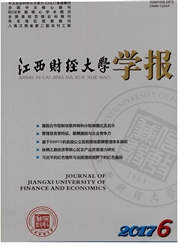

 中文摘要:
中文摘要:
本文基于2000--2010年鄱阳湖生态经济区25个县(市)粮食生产面板数据,运用粮食生产集中度指数,从总体和县域视角综合分析其粮食生产时空演变的特征,并通过空间计量模型实证分析了鄱阳湖生态经济区粮食生产时空演变的成因。结果表明:粮食产区由高效集约发展区涉及县(市)逐渐向滨湖控制开发带涉及县(市)转移和集中;新建、都昌、鄱阳、余干、彭泽、进贤、樟树七县(市)粮食生产集中度呈上升趋势,其余18个县(市)粮食生产集中度呈下降趋势;粮食单产和复种指数对粮食生产时空演变起到显著正向作用,其次是人均耕地面积和种粮经济效益比,而肉类产量、人均GDP和非农就业机会对粮食时空演变起到负向作用。
 英文摘要:
英文摘要:
Based on the panel data of 25 counties grain production in Poyang Lake Eco-economic Zone (PLEEZ)from 2000 to 2010. the characteristic on space-time evolution of grain production was analyzed from the overall and country views by using the index of production convergence. Through Spatial Econometric Model, the contributing factors of the evolution above were analyzed. The empirical results show that gram production areas by the efficient and intensive development areas transfer to the lakeside development areas. The indexes of Fain production in Xinjian. Duchang, Poyang, Yugan, Pengze, Jinxian Zhangashu increased and the indexes of other 18 counties declined. The space-time evolution of grain production is effeeted positively by the indexes of grain yield per area and multiple cropping and is affected negatively by meat production per capita GDP and non-agricultural employment opportunities.
 同期刊论文项目
同期刊论文项目
 同项目期刊论文
同项目期刊论文
 期刊信息
期刊信息
